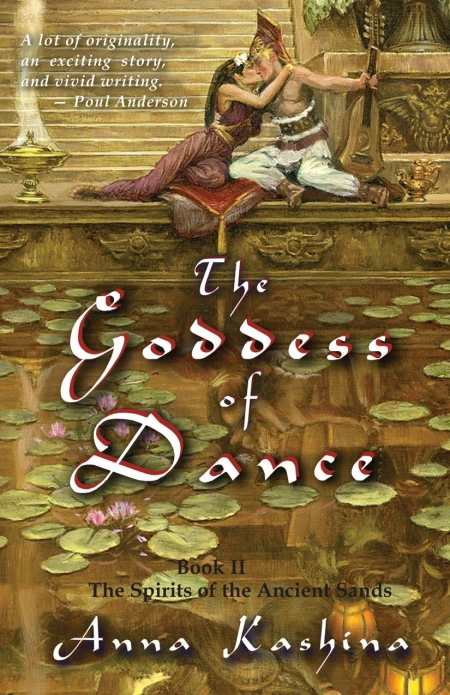The Goddess of Dance
- 2012 INDIES Winner
- Silver, Fantasy (Adult Fiction)
This Arabian fantasy is the second in the Spirits of the Ancient Sands series. In Part I, The Princess of Dhagabad, we are introduced to Princess Gul’ Agdar, the youthful daughter of a sultan who, having no male heir, has decreed that his daughter will one day rule his sultanate, and for that she must marry an arrogant prince whom she despises. Her heart, however, from earliest childhood, has been set on a djinn named Hasan. She believes that freeing him from his slavery to revert to a human state will enable her to marry him.
Part II, The Goddess of Dance, opens with the teenage princess’s traumatic realization that her plan won’t work. Her father is set on banishing Hasan, and her mother advises her to do her duty and marry for the kingdom. Even Hasan, it seems, is in on the plot to seal her unhappiness, telling her, “By freeing me, princess, you have disturbed the ancient balance of powers that was there since the beginning of time. Our very existence is now in great danger. I have reasons to believe that if we remain together—and especially if you learn any magic at all—it could make things worse.”
Thus begins the quest for balance in the universe and happiness in the troubled heart of Gul’ Agdar. In order to find a path to Hasan, she has to undergo a series of tests, overseen by a strange and alluring female spirit named Shogat. What the princess doesn’t realize is that she is sharing dreams with Thea, a girl she thought was gone forever, and that Thea is in turn linked to Shogat and her mystical talents. Thea is a dancer, and Gul’ Agdar plays the tama domga, an ancient instrument whose spell-binding sound accompanies the dance. The princess is also being observed by the fay Zobeide, a former lover of Hasan, and by the maleficent Caliph Agabei, Shogat’s master, who seeks to discover the source of the princess’s power. How could a mere mortal free a djinn? Agabei is certain that the princess is unwittingly adept enough to destroy the world, and hers is an ability he would like to possess.
The book takes many turns as the princess endures mental and physical suffering, both on her own journey and through the dreams of Thea. Word comes that one of her father’s concubines has given birth to a healthy baby boy, something that no one believed could happen without sorcery. Is it possible that the princess can now be freed from her obligation to marry someone she doesn’t love? She still longs for Hasan, who, behind the scenes, remains concerned not just for the princess’s safety but his own. Before the two can share their love, his human strength and his knowledge of wizardry will be tested to the limit and the princess will discover within herself the secret of the dance.
Ancient Arabia is a setting that readily lends itself to fantasy tales, and Kashina, a scientist as well as a writer, has found in it a rich treasure trove of imagery, color, romance, intrigue, and mystery. Her complex tapestry will delight fans of the genre who will doubtless enjoy immersing themselves in the further trials of Princess Gul’ Agdar.
Reviewed by
Barbara Bamberger Scott
Disclosure: This article is not an endorsement, but a review. The publisher of this book provided free copies of the book and paid a small fee to have their book reviewed by a professional reviewer. Foreword Reviews and Clarion Reviews make no guarantee that the publisher will receive a positive review. Foreword Magazine, Inc. is disclosing this in accordance with the Federal Trade Commission’s 16 CFR, Part 255.

